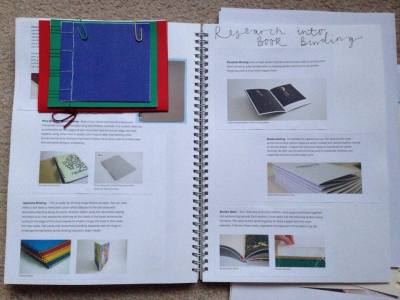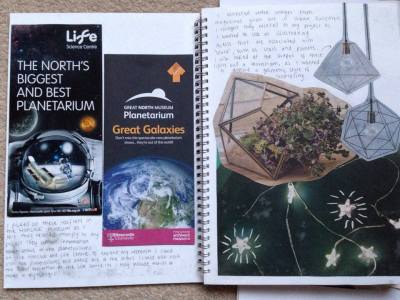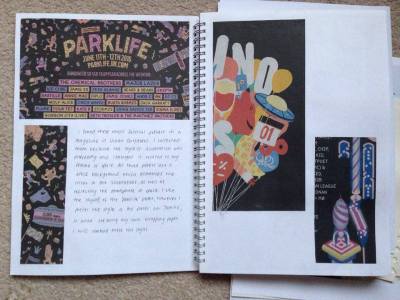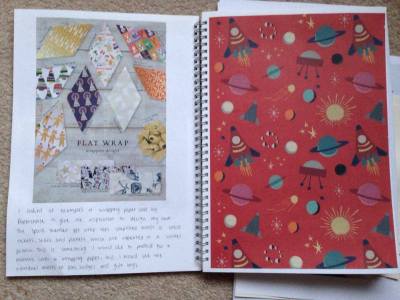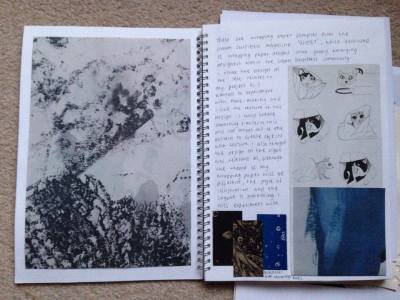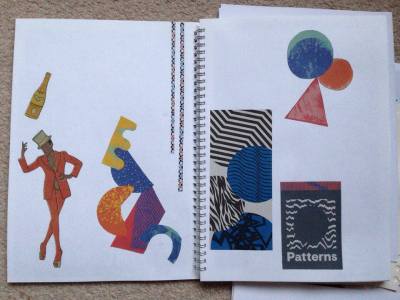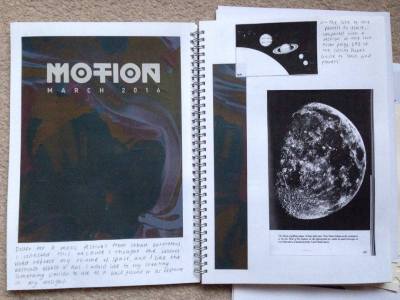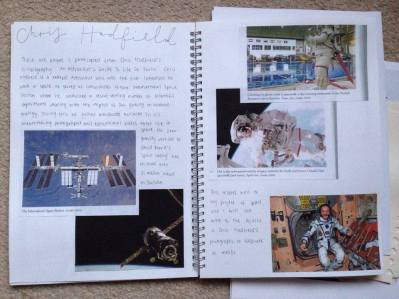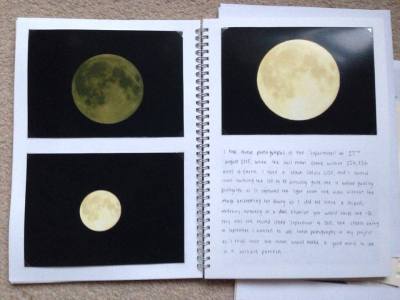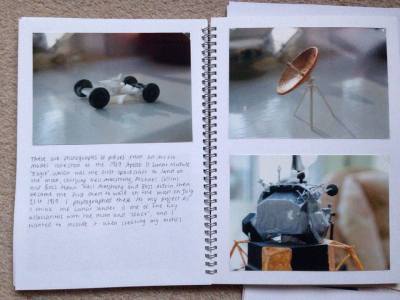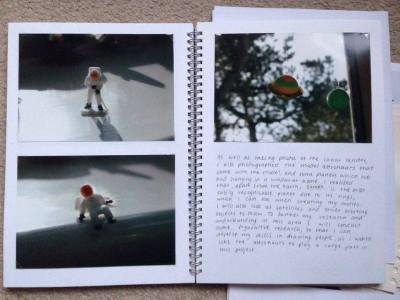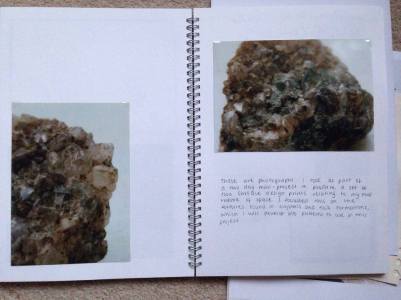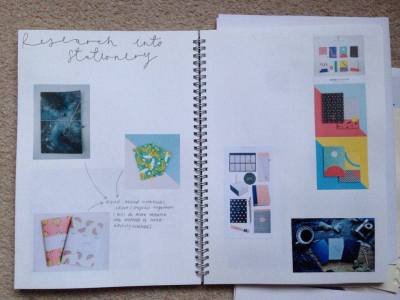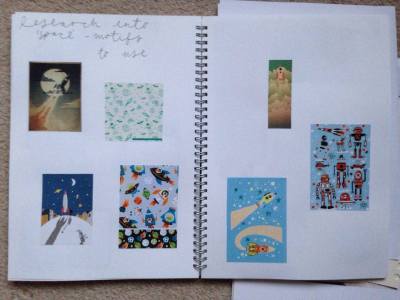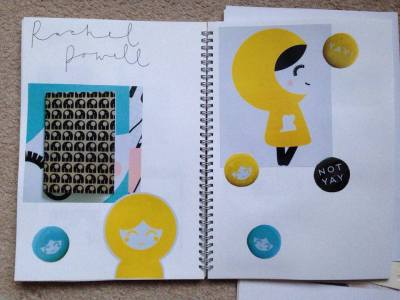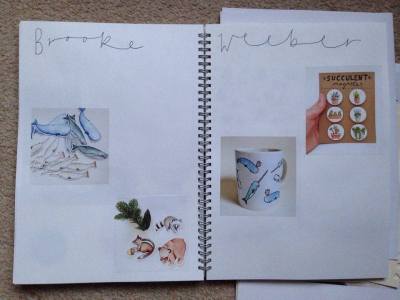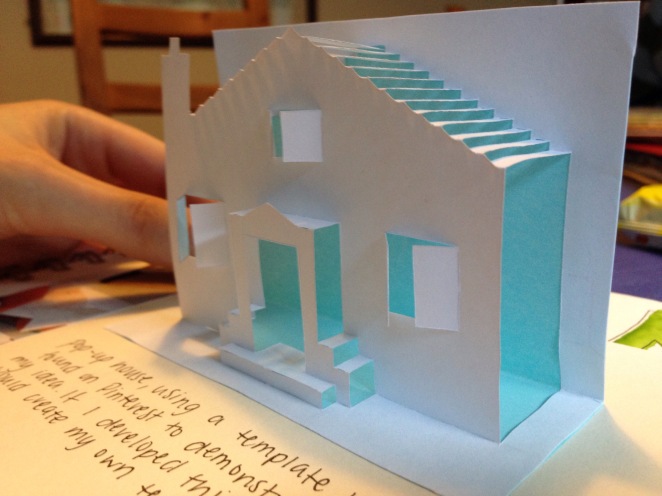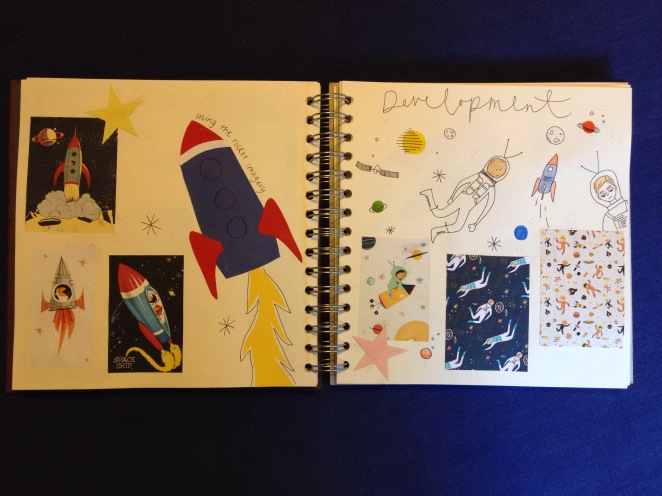This week I expanded my research by responding to the illustrators and designers that I had researched last week. On Monday I created some initial illustrations of motifs that related to my theme, such as planets, satellites, and rockets, in the style of Brooke Weeber. I then cut these out and began to collage them together to come up with ideas to create a surface pattern.
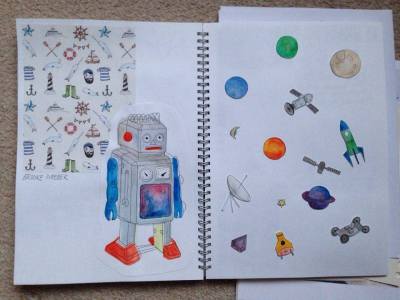
To develop this I began researching into figurative illustration, which I will research further by taking photographs of people and using the Airfix model astronauts to draw from. I then did some further research into examples of prints and drawing techniques that I could use.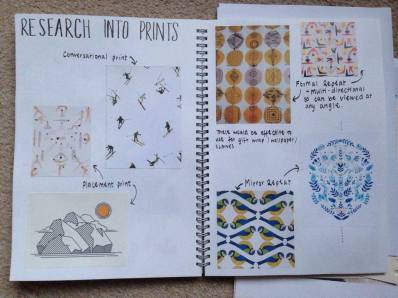
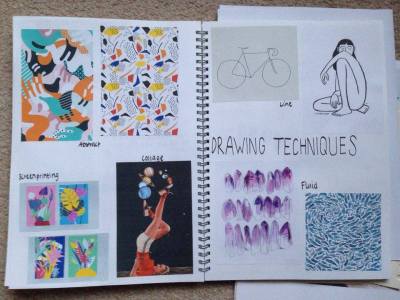
I also thought about what final pieces I would make, and with the help of other students I came up with a mind map of ideas for products I could make or design, such as notebooks, badges, wrapping paper, gift tags, greetings cards, writing paper, envelopes, pen/pencil covers, lunch boxes, tape, stickers and postcards.
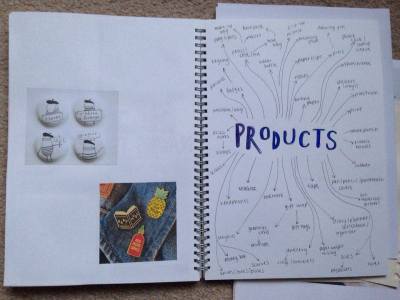
At the weekend I went to the Ouseburn Open Studios, and had the opportunity to meet some of the artists that work there and to view their work. I particularly enjoyed meeting Jim Edwards and looking at his paintings of the North East, and I thought I could experiment with the way he paints stars and lights in his paintings. I also liked the strong colours he uses in his paintings, which I think will work well for my theme. As well as Jim Edwards’ studio, I visited the Northern Print studio, and I bought some samples of wrapping paper and notebooks as visual research for my sketchbook. I also picked up a leaflet as it contained information about different types of printing, and workshops that they offer at the studio.
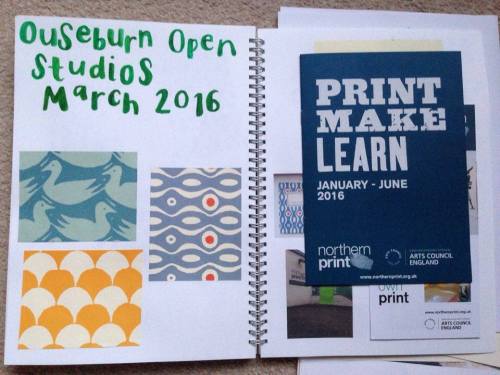
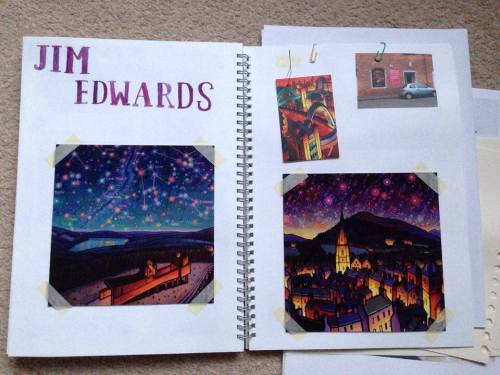
I also researched into book binding methods that can be done by hand, either by sewing the pages together or using a piece of wire to create a ring-bound notebook. I enjoyed learning how to create a book using Japanese Binding, and I think that it looks very decorative when it is finished, however if I made my notebook like this it would have to have a very wide margin as the stitching takes up quite a lot of the page and it is difficult to open fully. I think that my notebook would have to be ring-bound as it would allow the pages to be opened fully and the notebook could be bent back on itself, which is useful when writing in it.
